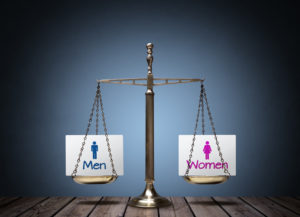I Think My Male Colleagues Earn More Than Me. Do I Have an Equal Pay Act Case?
An employee’s compensation should take many of their characteristics into account, such as their education, experience, and soft skills. An employee’s sex should not be among them. However, there remains a persistent gap between the average wages of men and women in the United States, with recent estimates putting the median earnings of women at about 82% of those of men. The Equal Pay Act, passed in 1963, attempts to bridge the wage gap by requiring employers to provide equal pay for equal work. But what does that mean in practice? A Maryland EEOC lawyer explains below.
The Equal Pay Act
The Equal Pay Act (EPA) prohibits pay discrimination based on sex for employees who are performing the same job at the same location. It applies to all employees “engaged in commerce,” which the Equal Employment Opportunity Commission (EEOC) defines very broadly to include most state and local government employees. The agency also defines “compensation” broadly to include all payments made to employees as remuneration for employment, including salary, overtime, bonuses and commissions, stock options, profit sharing, and vacation. While employment laws prohibiting sex discrimination are most commonly thought to protect women, the EPA applies equally to both women and men.
Equal Pay Requires Equal Duties
The EPA prohibits pay discrimination only between employees who are performing the same jobs. The jobs need not be identical but must be substantially equal based on the work duties involved. The Act defines “substantially equal” as jobs that require substantially equal skill, effort, responsibility, and working conditions.
- Skill: Skill includes a consideration of factors such as experience, training, education, and ability. It is determined based on the requirements for the job rather than an employee’s actual work duties. For example, if an employee must have the same skills to perform either job, the jobs will be considered to require equal skill, regardless of whether the employee in one of the jobs exercises the skill at issue.
- Effort: Effort is measured by the physical or mental exertion needed for the performance of a job. Equal effort can be found even where the effort may be exerted in different ways in the two jobs. For example, equal effort could be found between a male employee who occasionally carries large boxes and a female employee who frequently stocks and arranges items in displays.
- Responsibility: Responsibility measures the degree of accountability required in the performance of the job, with emphasis on the importance of the job obligation. Generally, employees who act in a supervisory capacity or exercise authority over others will be entitled to higher pay, even if their duties are otherwise the same.
- Working conditions: For equal pay standards to apply, the jobs must be performed under similar working conditions, which generally requires similar “surroundings” and similar “hazards.”
In addition to the above job-based requirements, the EPA requires that the two employees must work in the same “establishment.” This has been interpreted as meaning the same physical place of business rather than entire businesses or industries. Each physically separate place of business is thus considered a separate establishment.
Exceptions to the Equal Pay Act
The EPA does not prohibit all pay differences between men and women performing the same duties at the same location, however. The Act allows for pay differentials when the higher-paid employees pay is based on:
- A seniority system that rewards employees based on length of service
- A merit system that rewards employees for outstanding performance
- An incentive system that pays employees based on the amount or quality of the work they perform
- Any other factor related to job performance (e.g., paying a shift differential to workers who work less desirable shifts)
For more information about exceptions to the Act, please contact a Maryland EEOC lawyer.
How to Pursue an Equal Pay Act Claim
Unlike most employment discrimination laws, the EPA does not require claimants to first file a charge with the EEOC or obtain a Notice of Right to Sue. Rather, claimants can go directly to court to file a lawsuit against their employers. The statute of limitations for EPA lawsuits is two years from the date the pay discrimination took place, or three years if the discrimination was willful.
Contact a Maryland EEOC Lawyer for More Information about the Equal Pay Act
For more detailed information about the EPA and pursuing lawsuits based on it, please contact a Maryland EEOC lawyer at the Law Firm of J.W. Stafford for a consultation by using our online form or calling us at 410-514-6099.

